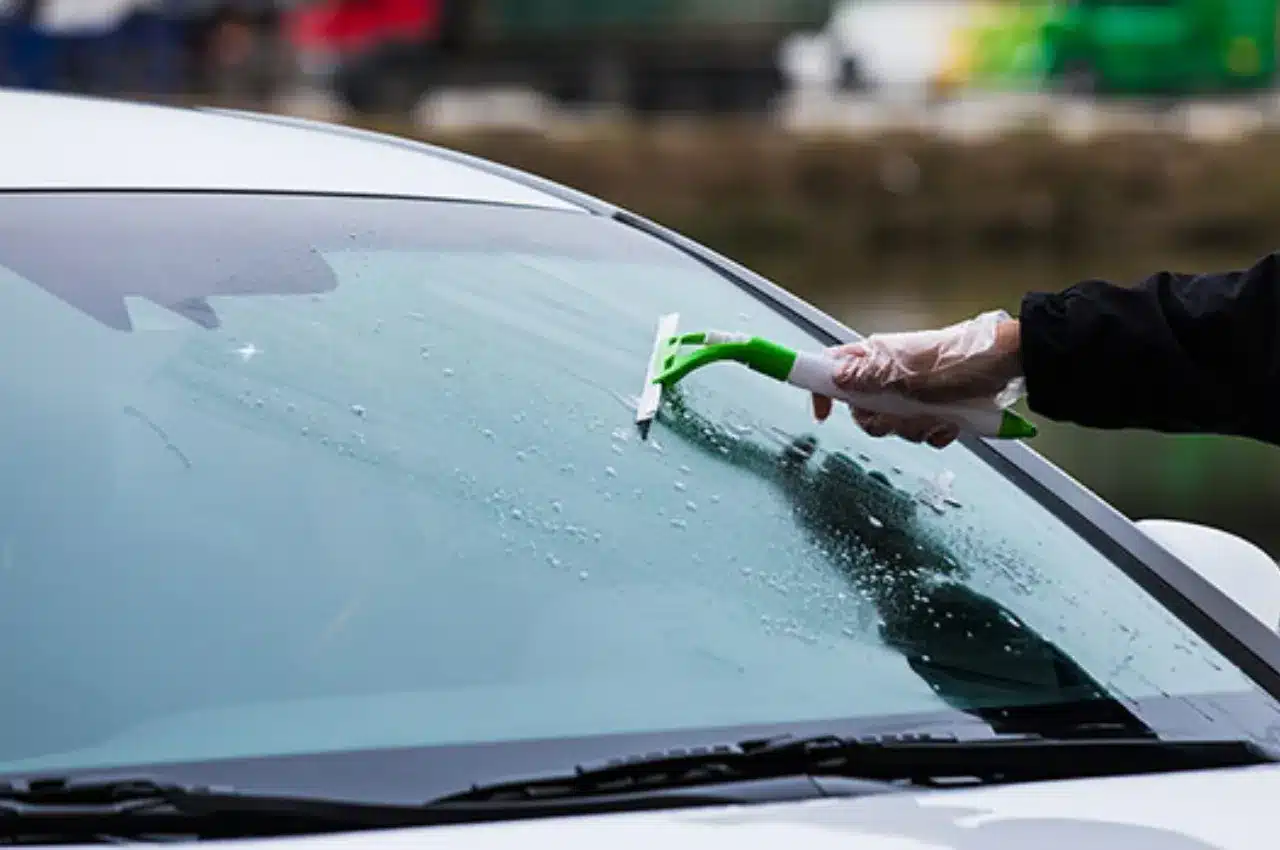Clarity and safety go hand in hand when it comes to driving. A clean and scratch-free windshield isn’t just about aesthetics, it’s about ensuring clear visibility and a safe driving experience. Whether you’re embarking on a scenic road trip or navigating your daily commute, taking care of your windshield is essential. Today we’ll unveil a treasure trove of tips and tricks to help you maintain a pristine windshield that not only enhances the overall look of your vehicle but also guarantees unobstructed views and minimized glare. From the right cleaning techniques to preventive measures that ward off scratches, join us as we delve into the art of windshield care and equip you with the knowledge to keep your view crystal clear and you’re driving as safe as can be.
Here are some of the ways in which a dirty or damaged windshield can impact your safety on the road
- Reduced Visibility: Perhaps the most obvious consequence of a dirty windshield is reduced visibility. Dust, dirt, water spots, and debris can accumulate on the surface, creating glare and obstructing your view of the road ahead. This diminished visibility can make it challenging to see pedestrians, other vehicles, road signs, and potential hazards, increasing the risk of accidents.
2. Glare and Reflections: A dirty windshield can exacerbate glare from the sun, oncoming headlights, and other light sources. Glare can temporarily blind you and make it difficult to see the road, especially during dawn, dusk, or inclement weather. Additionally, dirt particles can cause light to scatter, creating distracting reflections that further hinder your ability to focus on the road.
3. Compromised Night Vision: When driving at night, a clean windshield is crucial. A dirty windshield scatters light from streetlights and headlights, making it harder to discern details in the darkness. This can lead to difficulty judging distances and identifying potential obstacles, putting you at a higher risk of accidents.
4. Impaired Wiper Functionality: A dirty windshield can negatively affect the performance of your windshield wipers. Dirt and debris can accumulate on the wiper blades, leading to streaking, smearing, or uneven wiping. In heavy rain or snow, compromised wiper functionality can make it nearly impossible to maintain a clear view, making driving hazardous.
5. Scratches and Cracks: Minor scratches on the windshield might seem insignificant, but they can scatter light and cause glare, similar to how dirt does. Moreover, over time, these scratches can weaken the structural integrity of the glass, making it more susceptible to cracks and shattering upon impact. A cracked windshield can compromise the vehicle’s structural stability and airbag deployment in case of a collision.
6. Inadequate Rain Repellent: Many modern windshields come with rain-repellent coatings that enhance visibility during wet conditions. A dirty windshield can reduce the effectiveness of these coatings, causing rainwater to bead and streak, obscuring your vision and making it challenging to drive safely in the rain.
7. Delayed Reaction Time: Poor visibility and distracted attention due to a dirty windshield can lead to delayed reactions to sudden changes in traffic conditions or unexpected events on the road. This delay in response time can significantly increase the likelihood of accidents.
A clean and scratch-free windshield is an indispensable component of driving safety. Regular maintenance and timely repairs are crucial to ensure that your windshield remains in optimal condition. By acknowledging the various ways in which a dirty or damaged windshield can compromise your safety, you can take proactive steps to maintain clear visibility and minimize risks while on the road.
Different ways to clean your windshield
Cleaning your windshield effectively involves more than just a casual wipe-down. The right products and techniques can make a world of difference in achieving a crystal-clear result. Here’s a breakdown of different methods and their importance, along with a step-by-step guide to properly clean your windshield:
1. Glass Cleaner: Using a high-quality glass cleaner designed specifically for automotive use is essential. Regular household cleaners might leave streaks or residues that impair visibility due to their formulation.
2. Microfiber Cloth: Microfiber cloths are your best friend when it comes to windshield cleaning. Their fine fibers effectively lift dirt and grime without scratching the glass. Never use abrasive materials like paper towels, as they can leave scratches and lint on the windshield.
3. Squeegee: A squeegee can be a valuable tool for removing excess water and cleaner from the windshield. It helps prevent streaks and water spots, ensuring a clear view.

Importance of Using the Quality Cleaning Products and Tools
Using appropriate products and tools is crucial for maintaining the integrity of your windshield and achieving optimal clarity. The wrong cleaning agents can damage the glass, while improper tools can lead to scratches and uneven cleaning. Additionally, using subpar products might leave residues that hinder visibility, defeating the purpose of cleaning in the first place.
Step-by-Step Instructions:
1. Gather Your Materials:
Automotive glass cleaner
Microfiber cloth(s)
Squeegee (optional)
Water (if needed)
Empty spray bottle (if you prefer to make your own cleaning solution)
2. Park in the Shade:
Choose a shady area to clean your windshield. Direct sunlight can cause the cleaning solution to evaporate quickly, leaving streaks behind.
3. Prepare the Cleaning Solution (if not using a ready-made cleaner):
Mix the automotive glass cleaner with water in the spray bottle according to the manufacturer’s instructions.
4. Pre-Rinse: If your windshield is covered in thick dirt or debris, rinse it with water first to remove the loose particles. This step prevents scratches when you start cleaning.
5. Apply the Cleaning Solution: Spray the glass cleaner directly onto the windshield’s surface. Make sure to cover the whole area evenly.
6. Wipe with Microfiber Cloth: Gently wipe the windshield in a circular or back-and-forth motion using a microfiber cloth. Start from top, fold the cloth occasionally to expose a clean side. Ensure thorough coverage.
7. Use a Squeegee (optional): If using a squeegee, run it vertically down the windshield from top to bottom to remove excess cleaner and water. Wipe the squeegee blade with a cloth after each pass.
8. Check for Streaks: Inspect the windshield for streaks or spots. If you notice any, reapply the cleaner and repeat the wiping process.
9. Dry the Edges: Use a clean, dry section of the microfiber cloth to wipe the edges of the windshield and any remaining moisture or cleaner residue.
10. Verify Clarity: Sit inside your car and check the windshield for any streaks, spots, or smudges that might have been missed. Adjust your angle to catch any imperfections.
By following these step-by-step instructions and using the right cleaning products and tools, you can maintain a clean and clear windshield that enhances your driving safety and overall road experience. Remember to perform regular windshield cleaning to prevent the buildup of dirt, grime, and residues that can compromise your visibility on the road.
